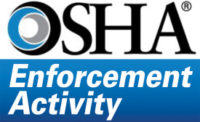Ten ways to prevent sudden cardiac death

A new report from the American College of Cardiology and the American Heart Association identifies ten ways to help health care providers, policy makers and patients prevent sudden cardiac death which results from sudden cardiac arrest.
Sudden cardiac arrest is one of the leading causes of death in the U.S. and one of the costliest in terms of health care costs. Even when a patient survives, the condition may have a devastating impact on the patient’s quality and length of life.
“This is the first comprehensive measure set in the area of sudden cardiac death prevention,” said Sana Al-Khatib, MD, FACC, co-chair of the writing committee and professor of medicine at Duke University. “Our vision is that these measures will be developed, tested, and implemented in clinical practice and that implementation will improve patient care and outcomes.”
Approximately 356,500 out-of-hospital cardiac arrests occur in the U.S. each year.
“While some people—such as patients with heart failure—are known to be at risk of sudden cardiac death, others are not. We need initiatives to improve the quality of care for those with a known risk, but also for the victims of sudden cardiac arrest,” Al-Khatib said.
From the report:
Performance and quality measures for the prevention of sudden cardiac death
- Smoking cessation intervention in patients who suffered sudden cardiac arrest, have a life-threatening ventricular arrhythmia, or are at risk for sudden cardiac death
- Screening for family history of sudden cardiac death
- Screening for asymptomatic left ventricular dysfunction among individuals who have a strong family history of cardiomyopathy and sudden cardiac death
- Referring for cardiopulmonary resuscitation (CPR) and automated external defibrillator (AED) education those family members of patients who are hospitalized with known heart conditions that increase the risk of sudden cardiac arrest
- Use of implantable cardioverter defibrillators (ICDs) for prevention of sudden cardiac death in patients with heart failure and reduced ejection fraction who have an anticipated survival of more than one year
- Use of guideline-directed medical therapy for prevention of sudden cardiac death in patients with heart failure and reduced ejection fraction
- Use of guideline-directed medical therapy for prevention of sudden cardiac death in patients with heart attack and reduced ejection fraction
- Documenting the absence of reversible causes of ventricular tachycardia/ventricular fibrillation cardiac arrest and/or sustained ventricular tachycardia before a secondary-prevention ICD is placed
- Counseling eligible patients about an ICD
- Counseling first-degree relatives of survivors of sudden cardiac arrest associated with an inheritable condition about the need for screening for the inheritable condition
The report attempted to identify performance measures that can assess the quality of care for the prevention of sudden cardiac death. Although guidelines exist for the prevention of sudden cardiac death, there has been an underutilization of public health initiatives, treatments and device therapies for at-risk patients.
Looking for a reprint of this article?
From high-res PDFs to custom plaques, order your copy today!






